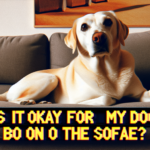Contents
Understanding Canine Memory
As a dog owner, it’s important to understand how your canine companion’s memory works. Memory plays a vital role in a dog’s ability to learn, retain information, and adapt to their environment. In this article, we will explore the fascinating world of canine memory and provide you with insights to better understand your furry friend.
The Types of Canine Memory
Dogs have several types of memory that contribute to their overall learning and recall abilities. Let’s take a closer look at each type:
1. Short-term memory: Similar to humans, dogs have short-term memory that allows them to hold information for a brief period. For example, when you ask your dog to “sit,” they remember the command for a short period until they receive their reward.
2. Long-term memory: Unlike short-term memory, long-term memory allows dogs to retain information for an extended period. This type of memory is crucial for their ability to learn commands, recognize familiar faces, and remember past experiences.
3. Associative memory: Dogs are masters of associative memory. They can link certain cues or stimuli to specific outcomes. For example, they can associate the sound of a can opener with the opening of a food can, which often leads to their excitement and anticipation.
4. Spatial memory: Canines also possess excellent spatial memory. They can remember the layout of their surroundings, such as the locations of their food bowls, favorite toys, or even the route to their favorite park.
The Factors Influencing Canine Memory
Several factors can influence a dog’s memory and their ability to retain information. It’s essential to take these factors into consideration when training your furry friend. Here are a few notable factors:
1. Age: Just like humans, a dog’s memory tends to decline with age. Older dogs may have more difficulty remembering things compared to their younger counterparts.
2. Breed: Different dog breeds exhibit varying levels of intelligence and memory capabilities. Some breeds, such as Border Collies and Poodles, are known for their high trainability and excellent memory.
3. Positive reinforcement: Using positive reinforcement techniques, such as treats, praise, and rewards, can help enhance a dog’s memory and reinforce their recall abilities.
Ensuring a Healthy Canine Memory
As a responsible dog owner, you can take steps to support and improve your dog’s memory. Here are a few tips:
1. Mental stimulation: Engage your dog in mentally stimulating activities, such as puzzle toys, obedience training, and interactive games. These activities can keep their minds sharp and improve their cognitive abilities.
2. Regular exercise: Physical exercise is not only vital for a dog’s physical health but also contributes to their mental well-being. Regular exercise helps reduce stress and promotes a healthy brain.
3. Consistency: Dogs thrive on routine and consistency. Establish a consistent training schedule and stick to it. Repetition helps reinforce their memory and reinforces the behaviors you want to see.
In conclusion, understanding canine memory is essential for effective training and a strong bond between you and your dog. By knowing the types of memory, the factors that influence it, and how to support a healthy memory, you can enhance your dog’s learning capabilities and create a harmonious relationship based on trust and understanding.
Factors Affecting Dogs’ Memory of Their Owners
Dogs are known for their loyalty and their ability to form strong bonds with their owners. But have you wondered what factors can influence a dog’s memory of their owners? In this article, we will explore the various factors that can affect a dog’s memory of their owners and how you can strengthen that bond.
1. Time spent together
The amount of time a dog spends with their owner plays a crucial role in their memory. Dogs are social animals and thrive on companionship. The more time you spend with your dog, the stronger the bond will be, and the more likely they are to remember you.
2. Positive experiences
Positive experiences create lasting memories for dogs. Dogs have the ability to associate certain experiences with specific individuals, including their owners. Engaging in activities that your dog enjoys, such as playtime, walks, and training sessions, can help reinforce positive memories of you.
3. Scent
Dogs have an incredibly keen sense of smell, and scent plays a significant role in their memory recall. Your dog can remember you based on your scent. Your unique smell becomes a comforting and familiar presence for them. This is why it’s essential to keep your scent around your dog, especially when you’re away, such as leaving an unwashed article of clothing.
4. Emotional connection
Emotions can have a profound impact on memory. Dogs are sensitive to their owners’ emotions and can form deeper connections when positive emotions are involved. Showing love, care, and affection towards your dog creates a strong emotional bond, making it easier for them to remember you.
5. Training and consistency
Training can influence a dog’s memory and their ability to remember their owner’s commands and cues. Consistency in training helps reinforce the association between the owner and the commands given. This, in turn, strengthens the bond and memory recall.
Dogs have a remarkable ability to remember their owners. Time spent together, positive experiences, scent, emotional connection, and training all contribute to a dog’s memory of their owner. By understanding these factors, you can create a strong and lasting bond with your furry companion. Cherish the moments you have with your dog, as they will remember you for a lifetime.
Maintaining the Bond With Your Dog
Having a strong bond with your dog is essential for a happy and fulfilling relationship. Dogs are social animals and crave companionship, love, and attention from their owners. In this article, we will explore some tips on how to maintain and strengthen the bond between you and your furry friend.
1. Quality Time
Spending quality time with your dog is crucial for building a strong bond. Make sure to create opportunities for both mental and physical stimulation. Take your dog on regular walks, play games that require interaction, and engage in training sessions. These activities will not only help you bond with your dog but also provide stimulation and exercise.
2. Positive Reinforcement
Positive reinforcement is a powerful tool for building trust and reinforcing good behavior in your dog. Whenever your dog exhibits positive behavior, such as following commands or being calm, reward them with praise, treats, or petting. This positive association will strengthen the bond between you and your dog and encourage them to repeat the desired behavior.
3. Communication
Effective communication is essential for maintaining a strong bond with your dog. Dogs rely heavily on their ability to interpret human body language and vocal cues. Use a clear and consistent tone of voice when giving commands, and always be aware of your own body language. This will help your dog understand what you expect from them and build trust and mutual understanding.
4. Grooming and Touch
Regular grooming sessions and physical touch are great ways to strengthen the bond with your dog. Brushing your dog’s fur, cleaning their ears, and trimming their nails not only keep them healthy but also provide an opportunity for bonding. Additionally, physical touch such as cuddling, petting, and gentle massages can help establish a sense of security and strengthen your connection.
5. Training and Enrichment
Training your dog is not only about teaching commands and tricks but also about building a strong bond and trust. Participating in training sessions together allows you to communicate effectively, reinforce positive behavior, and establish clear boundaries. Additionally, engaging in enrichment activities such as puzzle toys, scent games, and agility training can provide mental stimulation and strengthen the bond between you and your dog.
Maintaining a strong bond with your dog requires time, effort, and love. By spending quality time together, using positive reinforcement, communicating effectively, engaging in grooming and touch, and participating in training and enrichment activities, you can build a deep and meaningful connection with your furry friend. Remember, a strong bond with your dog will not only make your relationship more fulfilling but also contribute to their overall well-being.





